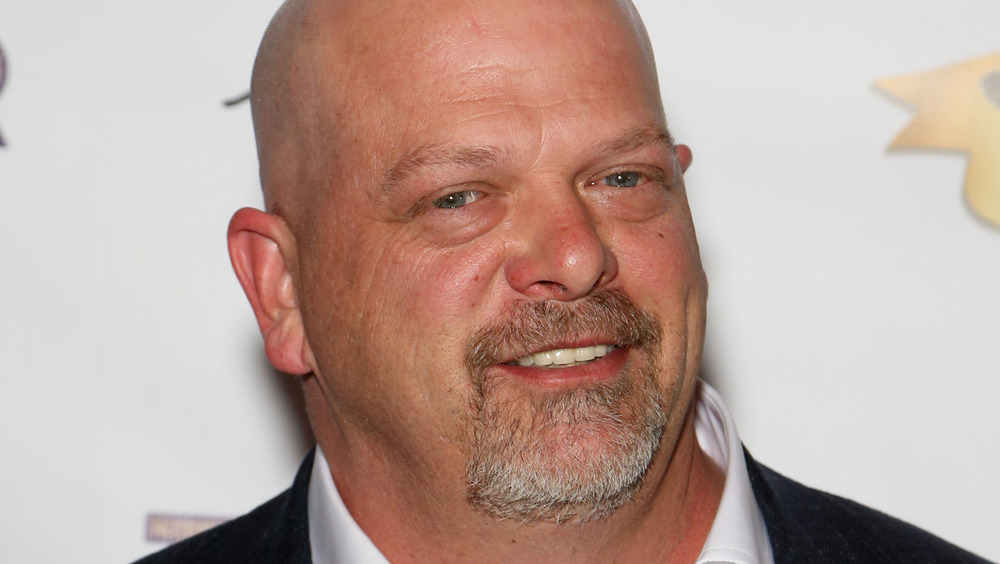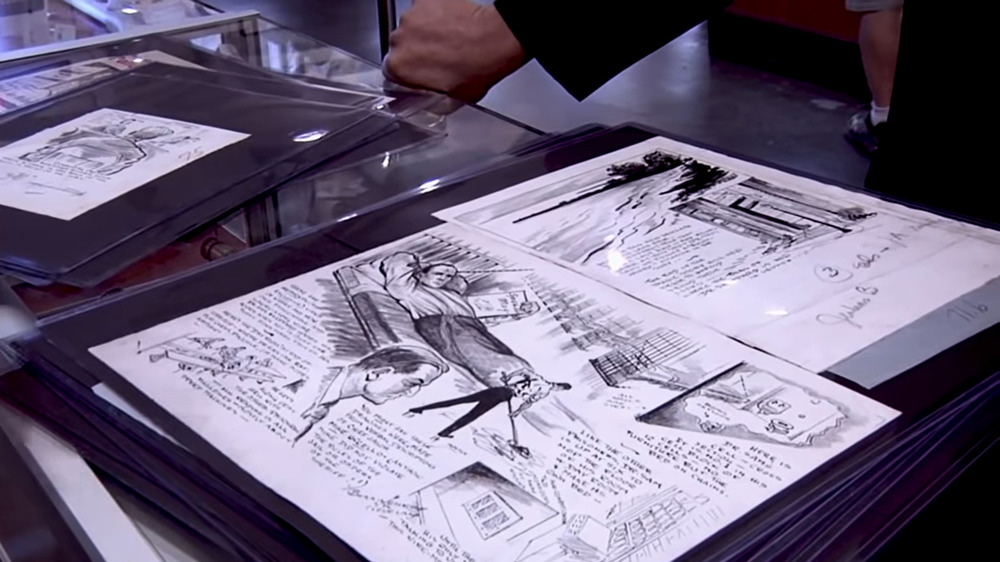This Is What The Pawn Stars Paid For Murder Trial Sketches Worth $10k
Whether you're talking about the original 1967 TV series or the classic 1993 action movie starring Harrison Ford, The Fugitive is an iconic piece of American media. Along with its modern adaptation starring Kiefer Sutherland, The Fugitive has captured the attention and adoration of thousands. It's also based on a true story.
Before Americans knew Richard Kimble, they knew Sam Sheppard, an osteopathic surgeon from Cleveland who was falsely convicted of murdering his pregnant wife in 1954. The initial trial was rampant with biased journalism and police misconduct. It became one of the most controversial trials in American history, and its notoriety served as the basis for Richard Kimble's character.
In 1966, over ten years later, the Supreme Court ruled for a retrial. Sheppard won the second case after more than a decade in prison, though his wife's real killer was never found. According to The New York Times, Sheppard's son would pick the case back up years later in an attempt to find the real murderer, but to no avail.
Still, relics from that legendary first case survived, forever memorializing the persecution of an innocent man. One of those relics just happened to find its way into everyone's favorite pawn shop from the reality show Pawn Stars.
How a famous set of courtroom illustrations sold for $4,300
In a season 7 episode, Rick Harrison finds himself faced with a series of courtroom drawings illustrated for use in newspapers and TV. Like much of the coverage surrounding the Sam Sheppard case, the illustrations were heavily biased against Sheppard. Aside from that, Rick knows very little about the drawings. So, as always, he calls in an expert to appraise the item.
Prior to the appraisal, the seller (a suave-looking man named Earl) testified that he wouldn't accept anything lower than $5,500 for the whole set of drawings. When the appraiser comes, he notes the quality condition of the illustrations and the notable reputation of the illustrator himself (Burris Jenkins Jr.). In the end, he delights Earl by appraising the item at close to $10,000 if sold to the right person.
Then, of course, the negotiations begin. Rick never buys items for what the appraiser values them — otherwise, he would never be able to make a profit. At the same time, he's concerned about additional expenses (framing and storing the sketches) and the amount of time it might take him to find a buyer. These factors add up to him lowballing Earl with an initial offer of $4,000. Earl is fair but firm and manages to work Rick's price up a bit more but eventually sells the whole set for $4,300. It's not quite the $5,500 he wanted, but Earl doesn't seem too unhappy.

